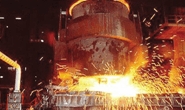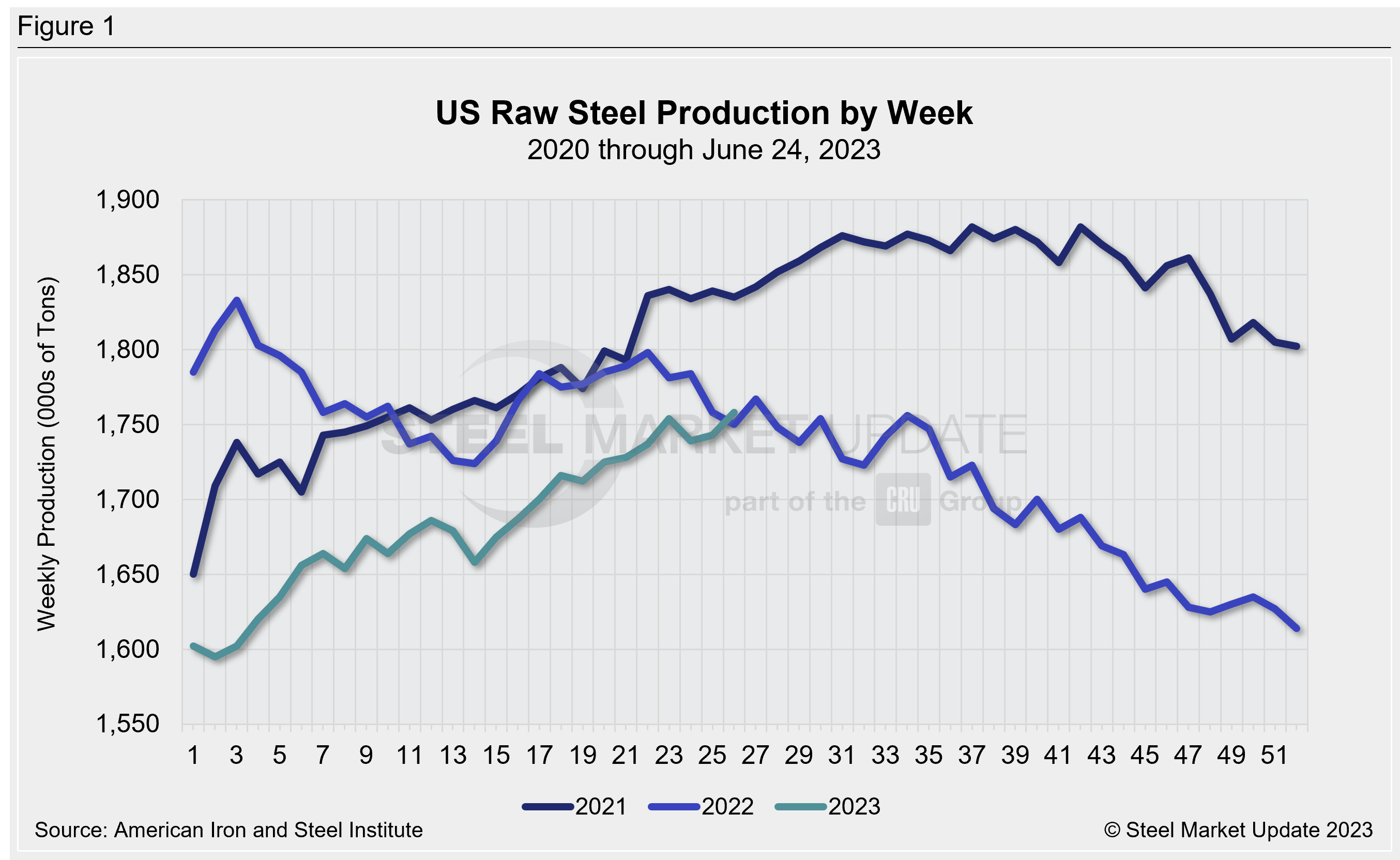Trade Cases

Raw Steel Production Edges Up 0.9%: AISI
Written by David Schollaert
June 26, 2023
Raw steel production by US mills moved higher again last week, gaining ground for the second straight week, according to data released by the American Iron and Steel Institute (AISI) on Monday, June 26.
Domestic production stood at 1,758,000 net tons during the week ended June 24, up 0.9% from 1,743,000 tons the previous week. Production is up 1.2% from the same period last year, when output was 1,738,000 tons.
The mill capability utilization rate was 78.1% last week, up from 77.5% a week earlier. Usage is down, however, from the same week of 2022 when the rate was 79.6%.
AISI said that adjusted year-to-date production through June 24 was 42,486,000 tons at a capability utilization rate of 75.8%. This is down 2.9% from the year-ago period when 43,743,000 tons were produced with an overall capability utilization rate of 80.3%.
Production by region for the week ending June 24 is below. (Note: week-over-week changes are in parentheses.)
- Northeast – 140,000 tons (down 2,000 tons)
- Great Lakes – 571,000 tons (up 7,000 tons)
- Midwest – 216,000 tons (up 2,000 tons)
- South – 766,000 tons (up 6,000 tons)
- West – 65,000 tons (up 2,000 tons)

Note: The raw steel production tonnage provided in this report is estimated. The figures are compiled from weekly production tonnages provided by approximately 50% of the domestic production capacity combined with the most recent monthly production data for the remainder. Therefore, this report should be used primarily to assess production trends. The AISI production report “AIS 7,” published monthly and available by subscription, provides a more detailed summary of steel production based on data supplied by companies representing 75% of US production capacity.
By David Schollaert, david@steelmarketupdate.com

David Schollaert
Read more from David SchollaertLatest in Trade Cases

Canada considers standard pipe duties in expiry review
The Canada Border Services Agency (CBSA) has completed its portion of an expiry review of the antidumping duty orders on welded standard pipe from Pakistan, the Philippines, Turkey, and Vietnam.

Biden hikes tariffs on Chinese goods, including steel and aluminum
The Biden administration announced a series of actions on Tuesday targeting China’s "unfair" trade policies. These actions will, among other things, make imports of steel and aluminum from the Asian nation even more prohibitive.

Price: How did ‘Buy Clean’ get switched to ‘Buy Dirty’?
The Inflation Reduction Act (IRA) appropriated more than $4 billion to the General Services Administration (GSA) and Federal Highways Administration (FHWA) for “Buy Clean” programs. The statute makes clear that GSA and FHWA purchases under these programs are limited to those with “substantially lower” emissions. There is no ambiguity in that requirement. The Environmental Protection Agency (EPA) has defined “substantially lower” to mean products with the lowest 20% of embodied emissions when compared to similar materials.

Domestic producers prevail in Japanese tin mill product trade case
A vote on Friday by the International Trade Commission (ITC) ensures that antidumping duties on certain steel sheet imports from Japan will continue for the mid-term.

Op-Ed: Strong trade enforcement builds prosperity and security
Tariffs on unfairly traded steel and other products help to stabilize America’s most important industries, safeguard tens of thousands of jobs, and protect national security. My union, the United Steelworkers (USW), never seeks these remedies lightly. And presidents, Republican and Democrat alike, implement them only after diligent investigations documenting the harm that foreign adversaries intentionally inflict upon our country with dumping, overproduction and other kinds of trade cheating. I don’t think Lewis Leibowitz considered these points while criticizing tariffs in his excessively pro-free-trade column, “Where is the voice of the consumer?” on May 5.
